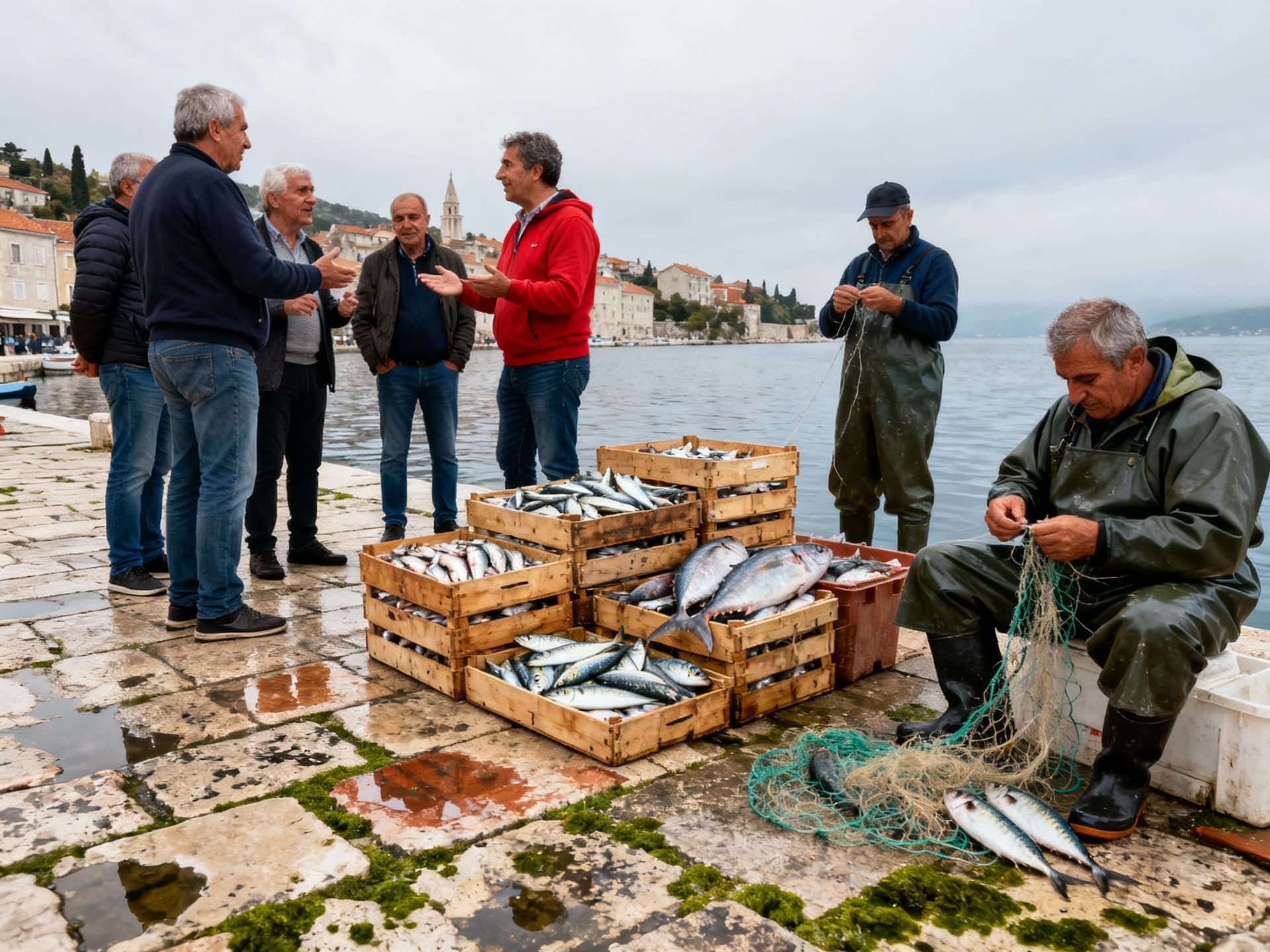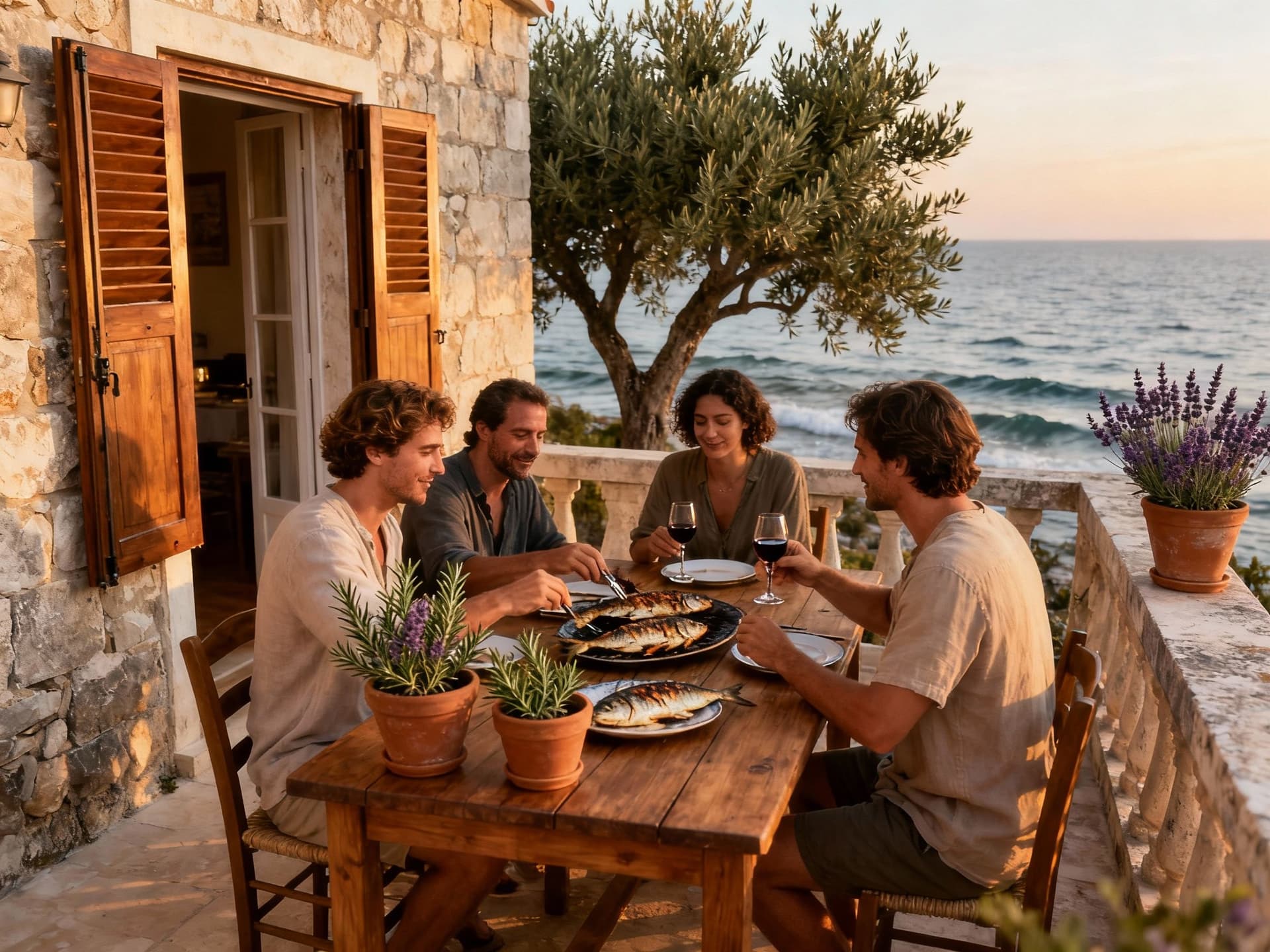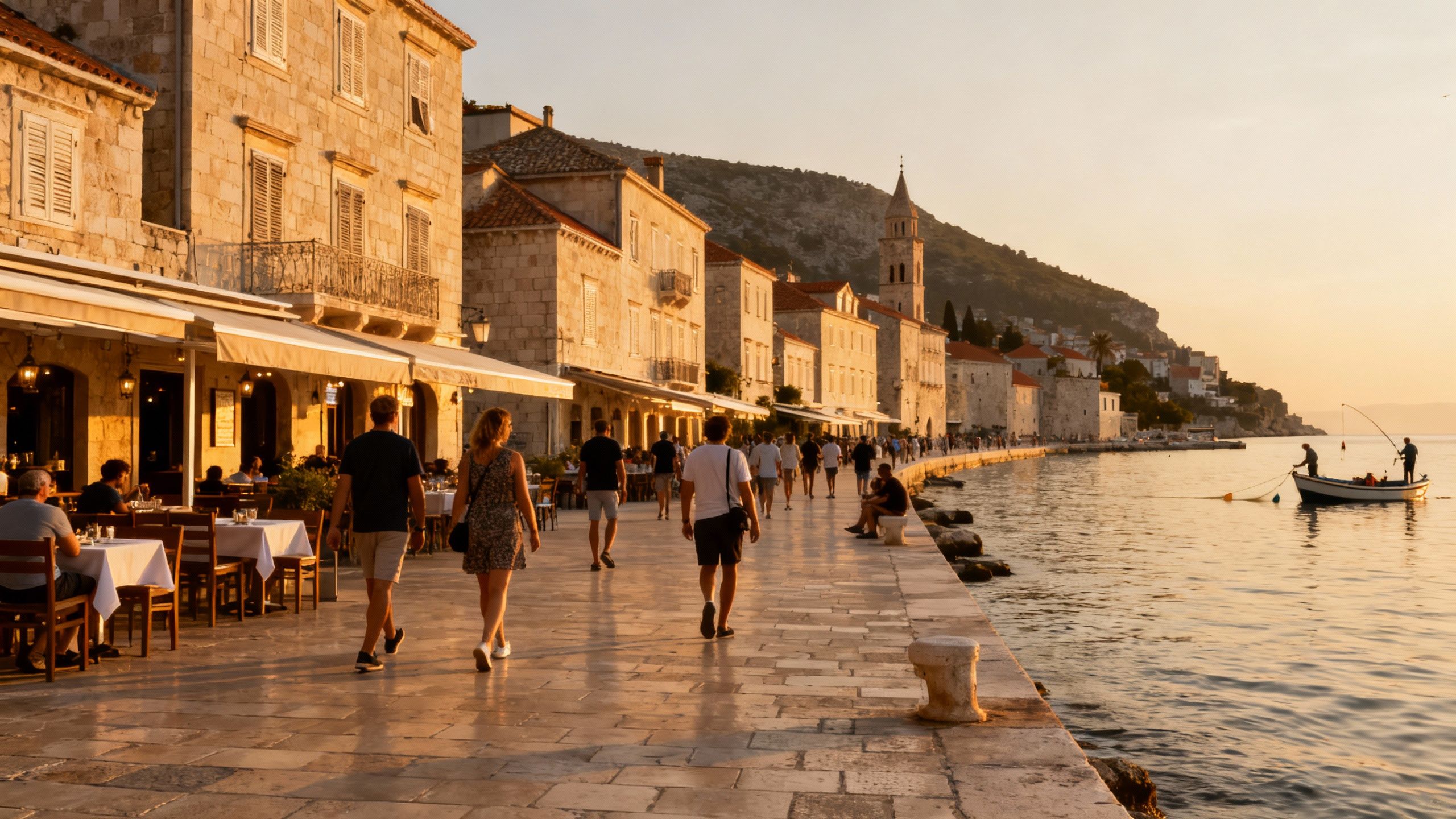Croatia: Fall in Love, Then Verify
Fall for Croatia’s coast and cities, but buy with precision: verify cadastral records, model tax and rental scenarios, and test lifestyle claims in person.
Imagine sipping espresso at sunrise on Split’s Riva, then walking five minutes to a 19th‑century stone apartment with shuttered windows and a terrace. Croatia looks effortless from the waterfront — cypress, cobbled lanes, and a lively kafana scene — but buying here requires reading between the lines. According to recent market analysis, prices have risen sharply across regions; that surge creates opportunity, and blind spots. This guide pairs the lived reality of Croatian life with the transparency checks you must run before signing.
Living the Croatia lifestyle

Croatia’s appeal is tactile: mornings at open markets, afternoons on pebble beaches, evenings with grilled fish and white wine. Life differs sharply by place. Zagreb hums with cafés and galleries; Dubrovnik is historic theatre and controlled tourism; Istria offers truffle hills and olive groves; the Dalmatian islands slow you down. For buyers, the lifestyle you imagine should map to a neighbourhood's actual rhythms, not a brochure. Spend time in local squares at different hours before imagining yourself resident.
Zagreb: city life with regional access
Picture morning markets on Dolac, espresso on Ilica, bikes along Maksimir. Zagreb’s central districts — Donji Grad, Gornji Grad, and pockets of Trešnjevka — offer walkable life and good resale liquidity. Data shows new-builds in Zagreb carry a premium; average central prices outpace many inland towns. If you want urban convenience and rental demand from locals and professionals, Zagreb is pragmatic. If you want seaside leisure, expect different trade‑offs in yield and seasonality.
Dalmatian coast & islands: tourism brilliance, supply constraints
Walk Split’s Marmontova at dusk and you’ll see why demand is fierce: historic fabric, short‑term rental revenue and limited beachfront plots. The Croatian Bureau of Statistics records faster price rises along the Adriatic coast than inland. That popularity means two things: premiums for sea views and constrained supply that pushes buyers toward renovations, island properties, or inland alternatives where price growth may accelerate next.
- Lifestyle highlights to scout in person
- Morning market in Split (Pazar/Dalmatian fish stalls)
- Sunset walk from Hvar town marina to the fortress
- Truffle dinners and wine roads around Motovun (Istria)
- Café culture in Zagreb’s Tkalčićeva and art openings in Lauba
Making the move: practical considerations

Lifestyle is the why; transparency is the how. Croatia’s market has become less opaque in recent years, but policy shifts and local practice still create asymmetries. Two headline issues to monitor are tax and short‑term rental regulation — both can alter returns and running costs materially. Read official notices and seek written clarifications from sellers and local authorities before relying on any verbal assurance.
Property types and what they mean for living
Stone Dalmatian houses, modern coastal apartments, and inland renovated farmhouses each carry different obligations. Coastal apartments often require higher maintenance, condominium rules, and tourist licensing if used short‑term. Older stone houses offer character but can hide structural work and septic/utility upgrades. New builds come with guarantees but pay premiums. Consider not just purchase price but recurring costs: municipal fees, building maintenance, and any new taxes targeting empty or short‑term let properties.
Working with local experts who protect lifestyle intent
A local attorney and an agent who understands municipal practice are non‑negotiable. The right team will verify cadastral records, check utility connections, confirm tourism registration (if relevant), and obtain a written land‑use history. They should also flag municipal plans that affect coastal building rights or conservation zones. Ask agencies for references from buyers who completed purchases in the same municipality within the last two years.
- Steps to marry lifestyle goals with transparency checks
- Define the lifestyle you need (daily routine, seasonality, access) and shortlist three neighbourhoods to test it.
- Commission title and cadastre checks; insist on written confirmation of easements, communal debts and last renovation permits.
- If you plan short‑term lets, verify local tourism rules and planned regulatory changes; model net yield with potential new taxes.
- Ask the municipality in writing about planned zoning changes or coastal protections within a 500m radius.
Insider knowledge: what expats wish they'd known
Expats often romanticise the coast and underestimate seasonality and community cycles. In summer, coastal towns fill with tourists and services expand; in winter, many cafés and small shops close. This transforms rental demand, maintenance needs, and neighbourhood atmosphere. Locals judge commitment: long‑term neighbours are typically the best source of practical truth — talk to them. Transparency isn't just paperwork; it's lived confirmation of claims sellers make.
Cultural integration and daily life
Croatians value directness and local reciprocity. Learn basic phrases, use local suppliers, and attend community events; you’ll discover hidden maintenance networks and trusted builders. Schools, healthcare access and grocery sourcing differ between islands and cities; plot these before committing. For many buyers, mastering where to shop and which cafe doubles as the informal noticeboard is the fastest route to feeling at home.
Long‑term considerations: taxation and policy shifts
Official statistics show house prices rising faster than inland wages in recent years, and policymakers have signalled a shift toward property taxes and tighter short‑term rental rules to improve housing supply. For buyers, this means modelling scenarios: modest tax hikes, stricter tourist licensing, or incentives for long‑term leasing. Build conservative cash‑flow models and stress‑test yields under changed rules.
- Practical red flags to spot on the ground
- Unregistered renovations or missing building permits
- Discrepancies between cadastral maps and physical boundaries
- Seller reliance on short‑term rental income without written municipal clearance
- Vague answers on utility upgrades or coastal setback rules
Conclusion: fall in love deliberately, buy transparently
Croatia delivers an enviable lifestyle. To make it durable, pair that desire with document‑level verification and local intelligence. Check official statistics for price context, request written confirmations from municipalities, and model conservative financials that allow for tax and regulatory shifts. When you combine lived experience with rigorous transparency checks, you buy more than a property — you secure a realistic, sustainable life.
Danish investment specialist who relocated to Costa del Sol in 2015. Focuses on data-driven market timing and long-term value for Danish buyers.


